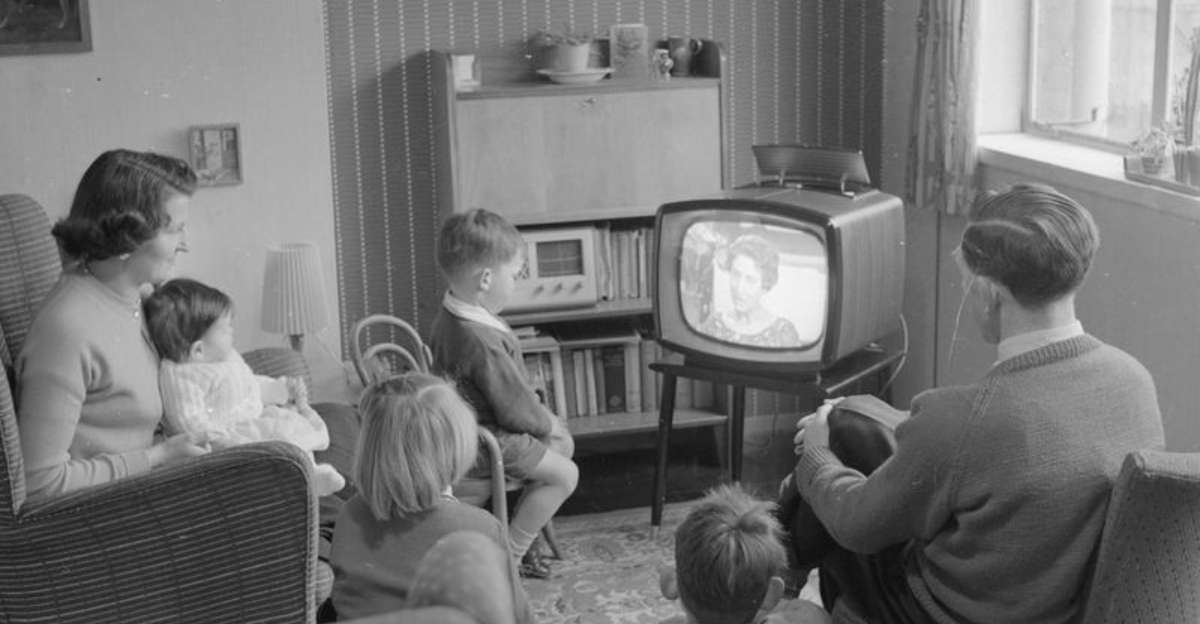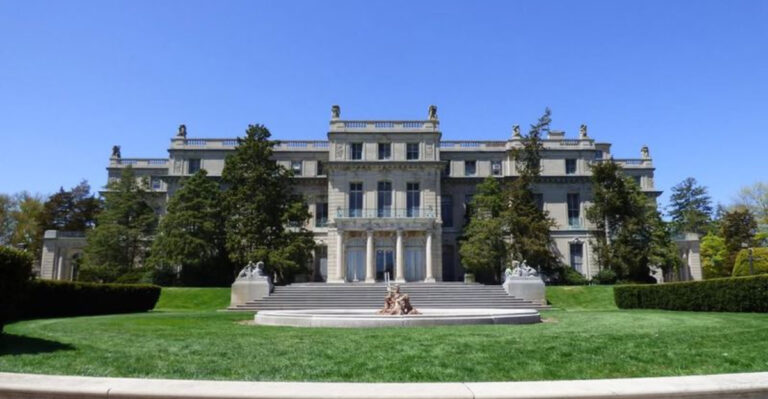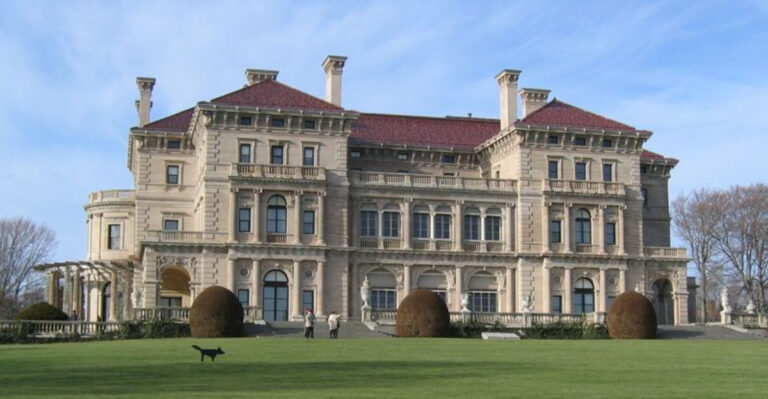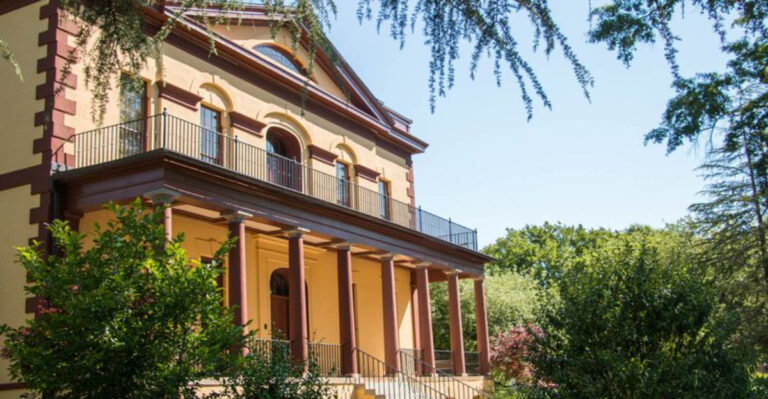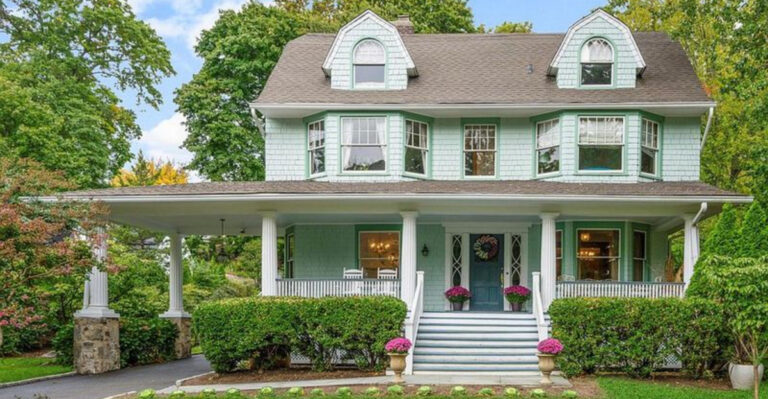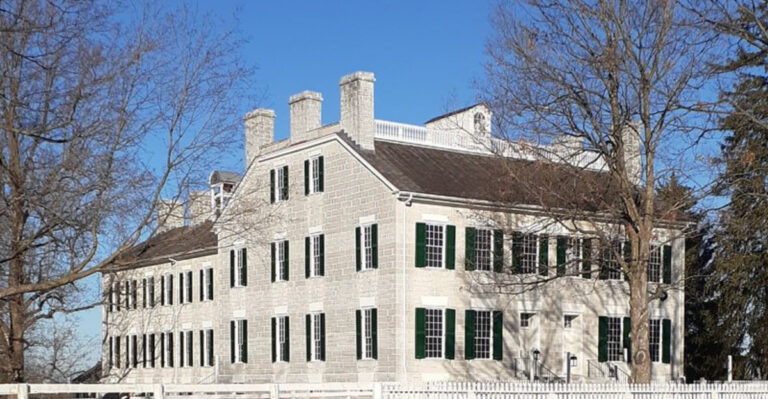Explore 1950s American Homes Through Incredible Vintage Photos
The 1950s were such a fascinating time, full of contradictions that still capture my imagination. People longed for the cozy, familiar days before the war, yet they were also dazzled by the promise of a shiny, space-age future.
As soldiers came home, women were nudged back into homemaking, and families flocked to the suburbs, building lives centered around their houses. All of this unfolded alongside incredible leaps in technology and culture.
But here’s what I’ve always wondered: beyond the nostalgia and the hype, what did a typical American home in the 1950s actually look and feel like?
1. A Financial Boom
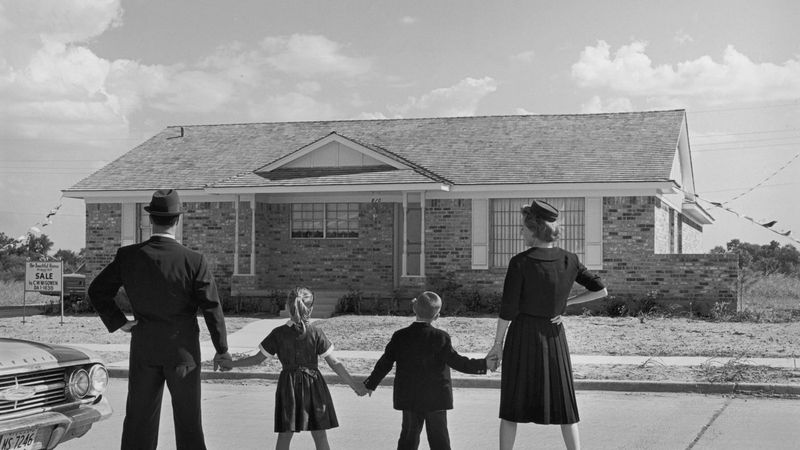
After World War II ended, the United States entered an era of unprecedented economic growth. Factories that once cranked out bomber jets and tanks for the war effort quickly shifted gears, channeling their massive industrial might into creating household goods.
Suddenly, the same assembly lines were rolling out televisions, refrigerators, and other modern conveniences.
Americans, eager to embrace comfort and novelty after years of hardship, eagerly snapped up these new products, fueling a consumer boom that transformed daily life across the country.
2. Search For Jobs
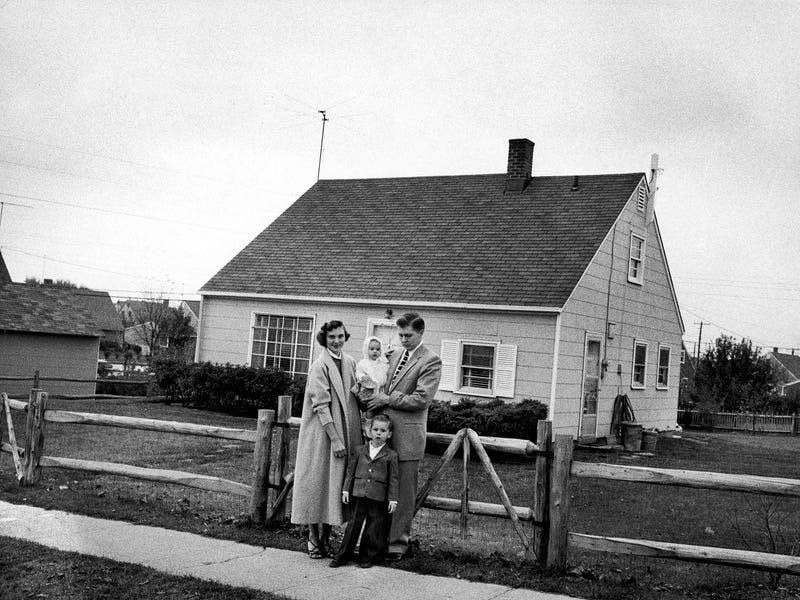
Though many experts feared economic disaster as millions of veterans came home looking for work in an economy built around wartime needs, those predictions never came to pass.
Most returning soldiers quickly found jobs, helping keep the economy humming. Meanwhile, families who had saved diligently during years of rationing were eager to enjoy life again.
With Americans having stashed away an impressive 21% of their disposable income during the war, they were more than ready to splurge on the luxury goods and appliances they had long been denied.
3. Escape To Suburbia
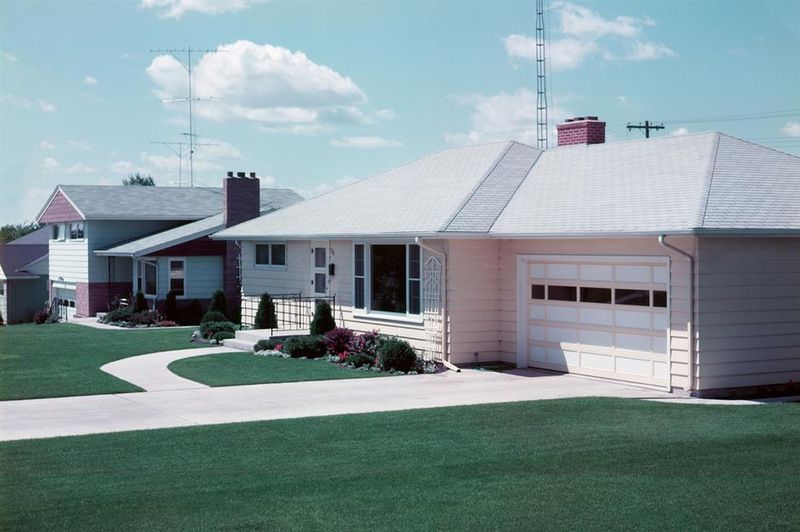
With help from the GI Bill and government-backed loans, homeownership suddenly felt within reach for countless middle-class families.
This surge in demand sparked a building boom, giving rise to brand-new suburban neighborhoods across the country. These carefully planned communities offered affordable homes in quieter, safer settings, far from crowded cities.
As families moved into these fresh developments, American culture shifted, placing new emphasis on family life and the comforts of home, setting the stage for the suburban dream that would define an era.
4. Mid-century Modern Homes
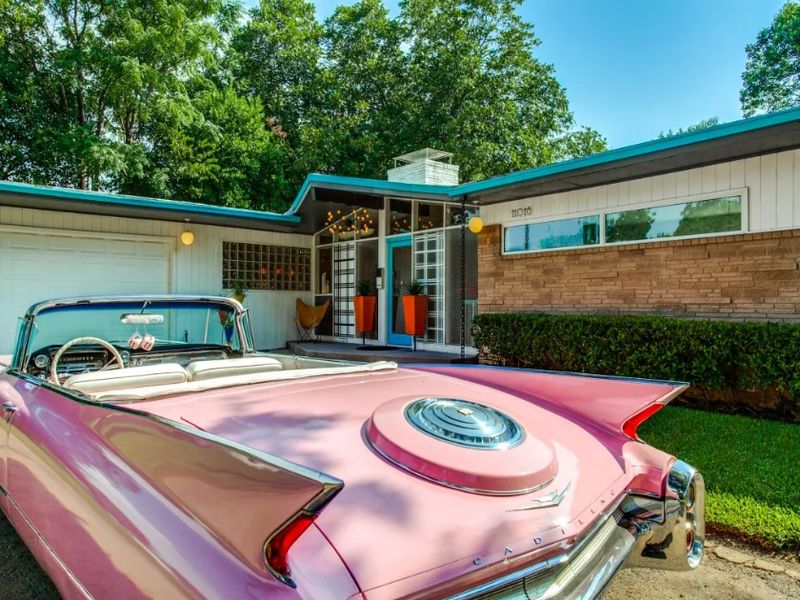
Advances in factory-made materials like steel and aluminum revolutionized homebuilding, allowing houses to go up faster and cost less than ever before.
The mid-century modern ranch quickly became the style of choice, with its sleek low roofs, spacious open layouts, and expansive picture windows that filled rooms with light.
Many of these new homes included attached carports or garages, a practical addition in a time when car ownership soared and three out of four Americans had a set of wheels by the decade’s end.
5. Function Over Formality
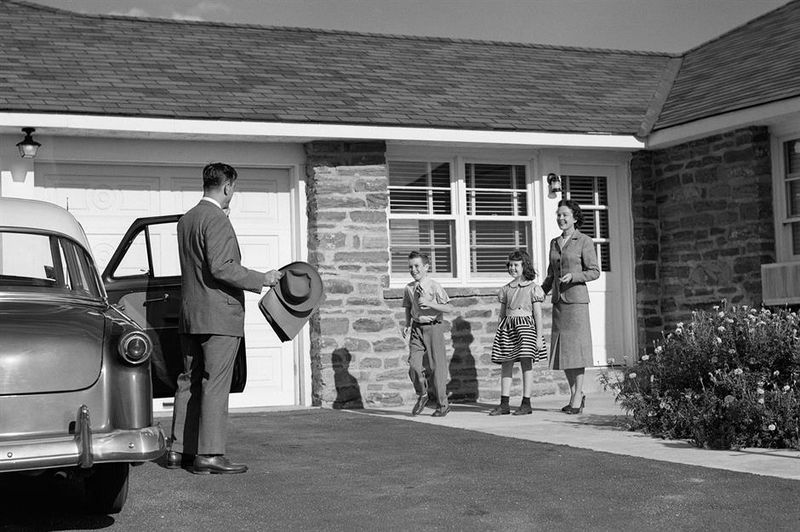
Much like the shiny new appliances of the era, homes themselves were rolling off production lines, as America’s powerful factories shifted focus to meet peacetime needs.
Advertisements from the time proudly showcased this new wave of efficient homebuilding. Large-scale developments like Levittown, launched in 1947 with over 17,000 single-family houses, became symbols of the American dream.
Inside, bold mid-century modern interiors took hold, trading old-fashioned formality for sleek functionality and celebrating modern materials like chrome, glass, and fiberglass that made life feel fresh and futuristic.
6. The Modern Bedroom
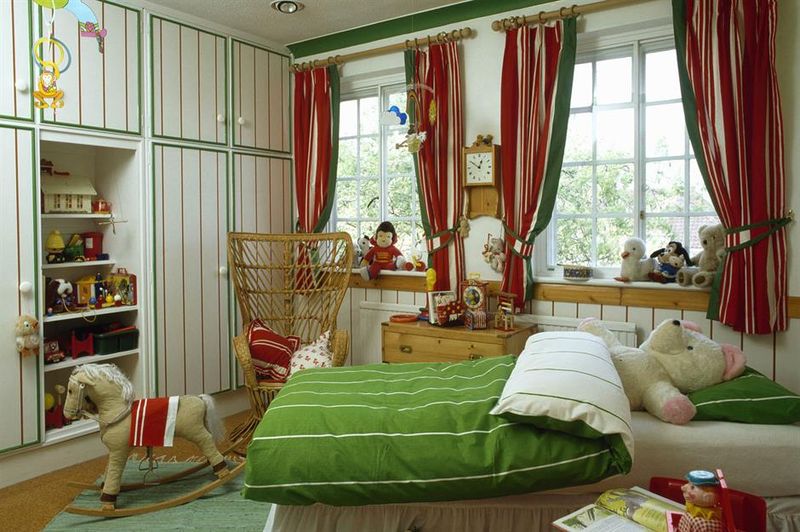
While bedrooms weren’t the first rooms guests would see, they still became a canvas for mid-century modern style.
The chic bedroom shown here captures the era perfectly with its bold mustard-yellow tones, geometric rug, and sleek, angular furniture. Elegant Asian-inspired artwork adds a touch of sophistication that was hugely popular at the time.
One standout feature is the sliding doors, a hallmark of 1950s architecture, which effortlessly connected cozy indoor spaces with the fresh air and open feel of the outdoors.
7. Busy Bathrooms
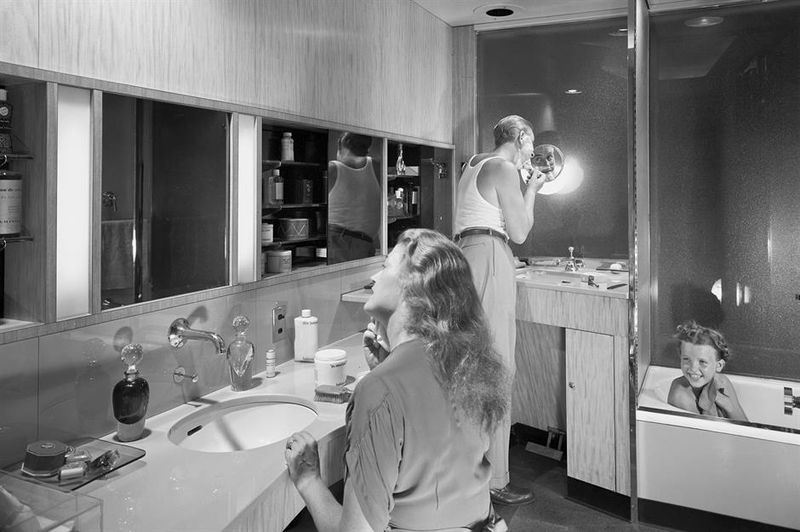
In the 1950s, bathrooms burst with cheerful colors, with sinks and tubs in shades of pink, blue, yellow, or green, and floors and countertops tiled to match.
Ads like this 1950 Kohler Plumbing example highlight how new materials from postwar factories, like shiny chrome fixtures and glossy enamel finishes, transformed these spaces.
Photos from 1955 capture entire families bustling in a single bathroom each morning, since most suburban homes included just one full bath, making mornings a lively, shared routine in many households.
8. A Social Kitchen
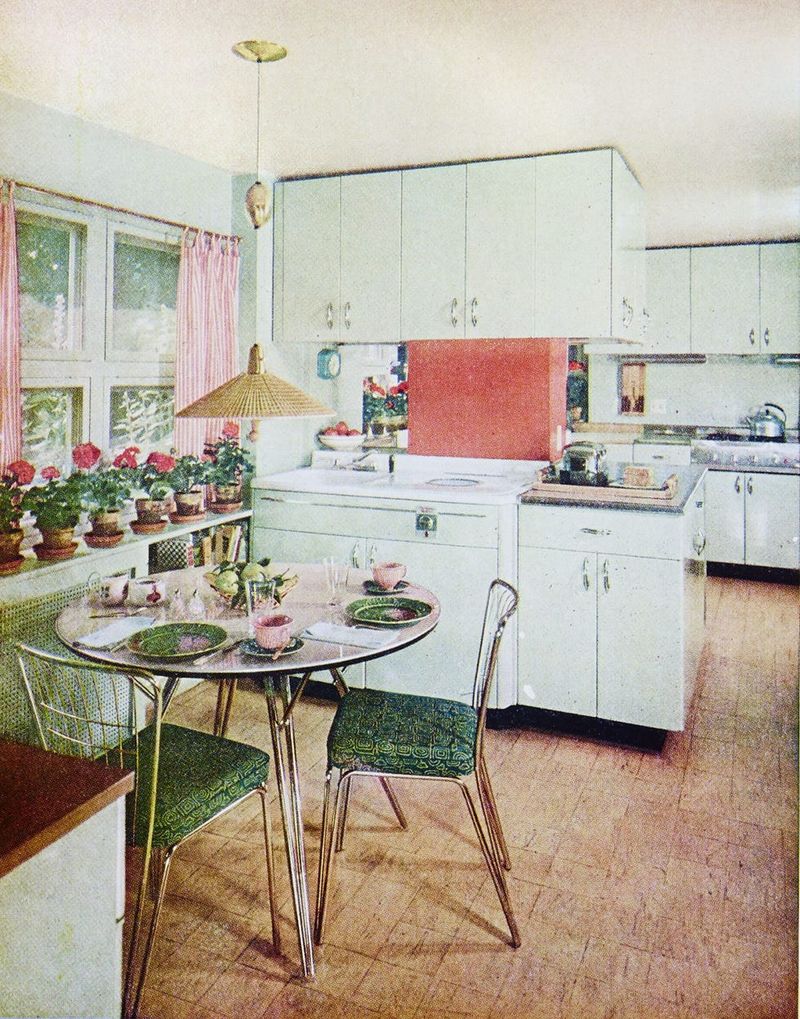
Kitchens exploded with personality, decked out in pastel teals, cheerful pinks, and sunny yellows. Shiny chrome fixtures, checkerboard floors, and retro diner-style breakfast nooks turned these spaces into bright, welcoming hubs.
Materials like linoleum and fiberglass made cleaning a breeze, while curved Smeg refrigerators with gleaming silver handles became instant icons.
Unlike earlier decades, when kitchens were tucked away, the 50s embraced them as lively social centers where families and friends gathered, making kitchens stylish, open, and ready for company.
9. Casual Dining
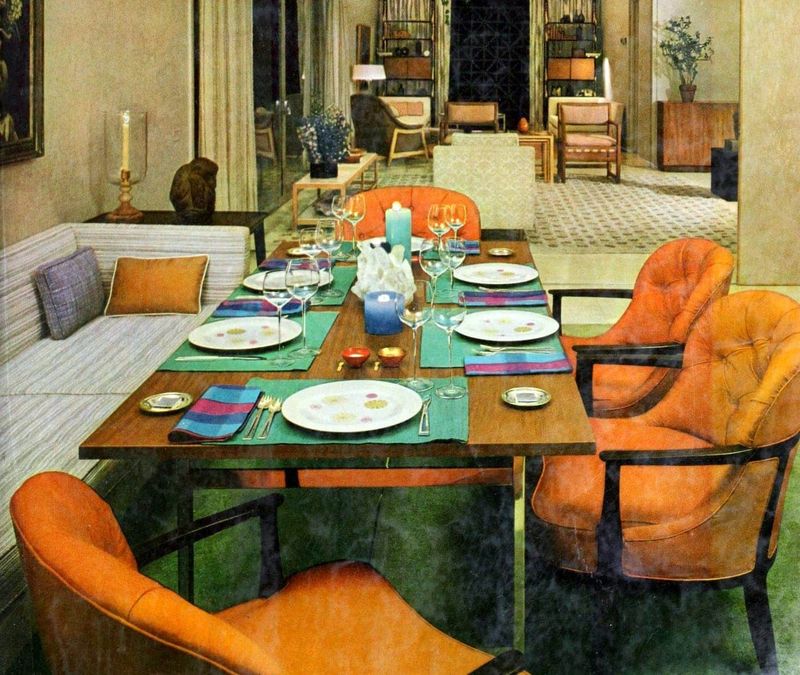
During the 1950s, dining rooms for everyday Americans shed their stiff, formal vibes and embraced a lighter, more cheerful look.
Out went the heavy dark wood tables and somber drapes, replaced by bright geometric patterns and airy color schemes. Teak became the wood of choice, taking over from traditional mahogany.
Many dining areas were designed as part of open floor plans or placed right next to the kitchen, making it easy for families to share casual, comfortable meals together in a relaxed, welcoming setting.
10. A Bold New Look For Living Rooms
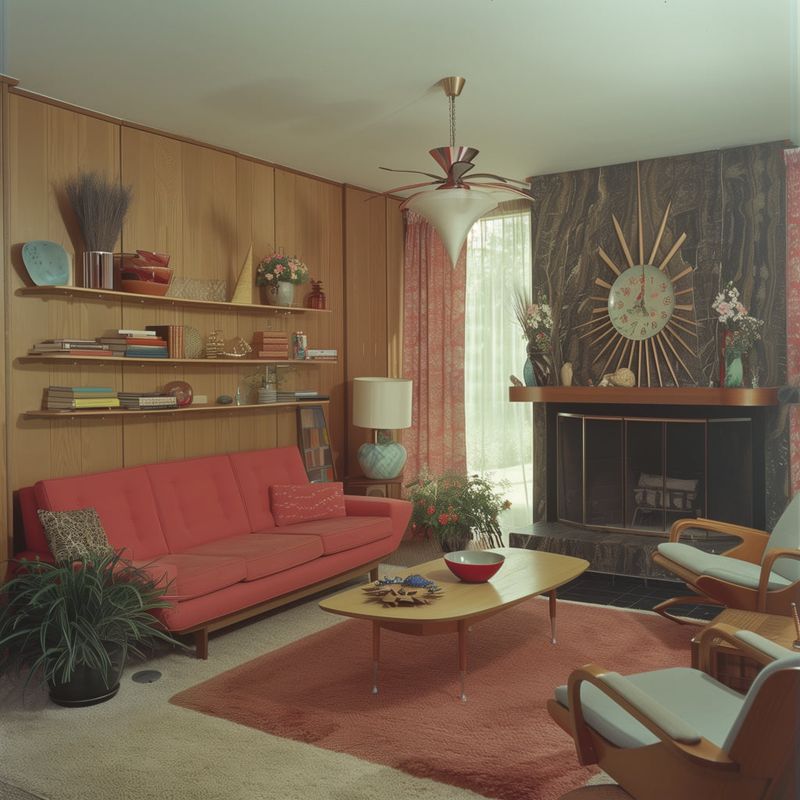
In the 1950s, living rooms continued to be the heart of the home, perfectly showcasing the era’s fresh design touches like clean lines, bold accent colors, and striking furniture pieces.
Busy patterns gave way to solid colors and smooth, simple surfaces. But the biggest change was the arrival of the television. TVs transformed living rooms, shifting the focus from fireplaces and radios to glowing screens.
By 1960, nearly 46 million American homes had a set, and families often planned dinners and evenings around their favorite shows and the nightly news.
11. The Golden Age Of Television
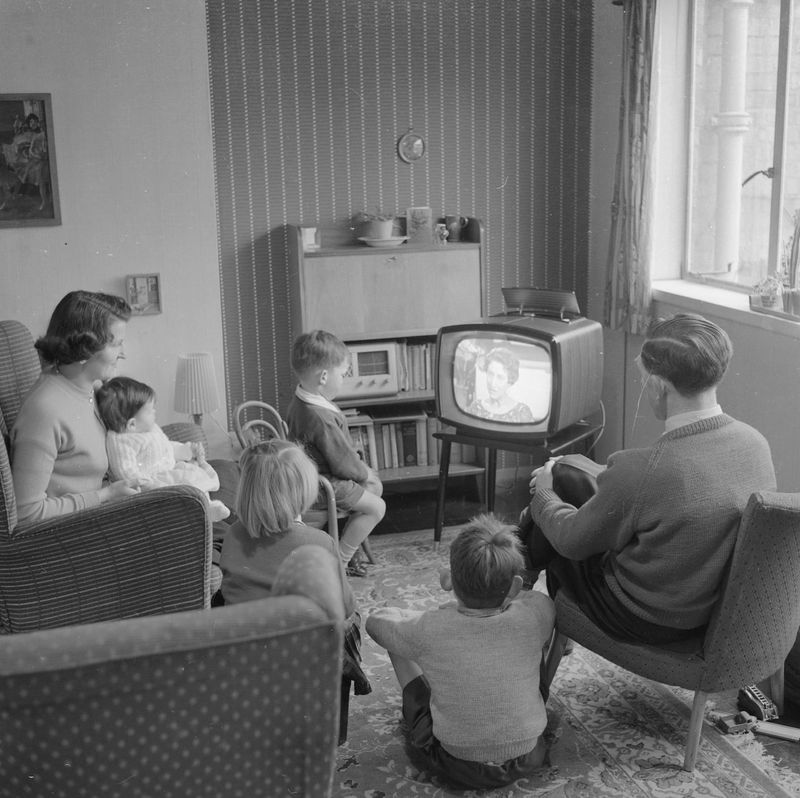
With only a handful of channels and no way to pause or record, families would gather religiously around the TV each night, making television a central ritual of daily life.
This “Golden Age of Television” deeply shaped American culture, as commercials during popular shows introduced new products and inspired countless home updates.
Beloved programs like I Love Lucy and Gunsmoke drew millions of loyal viewers, while series such as The Donna Reed Show and Leave It to Beaver set the standard for what many saw as the ideal American family.
12. New Twists On Old Tech
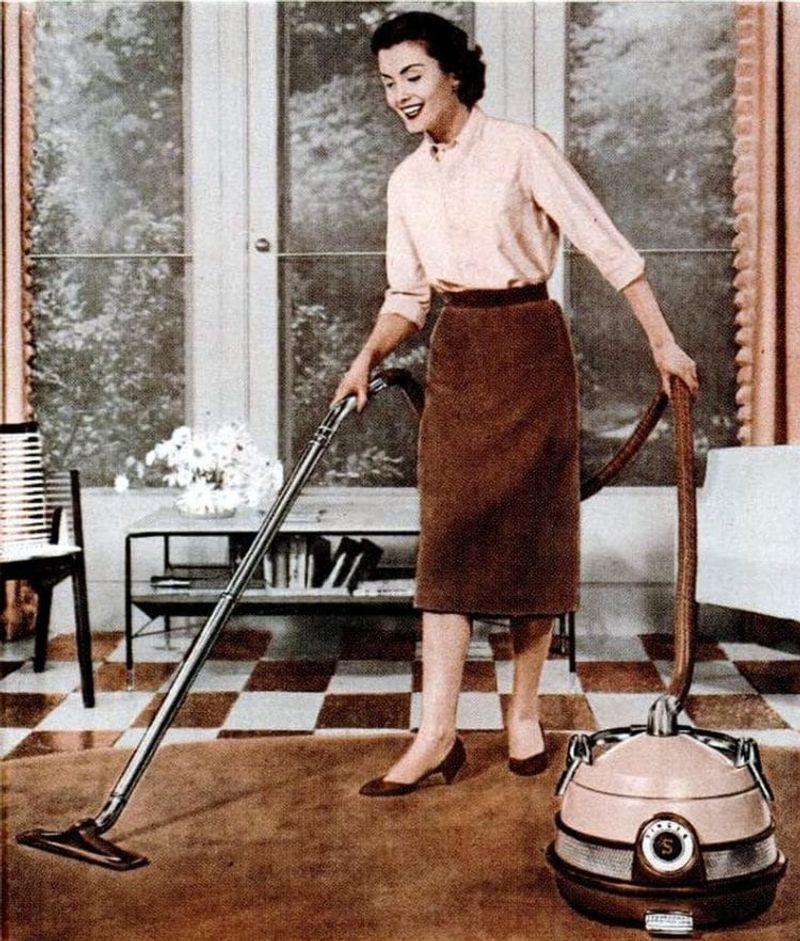
The vacuum cleaner, already a must-have in most middle-class American homes, became even more of a game-changer for women’s daily chores during the 1950s.
New features rolled out that made cleaning faster and easier, like disposable bags that simplified emptying, longer cords that let you reach every corner without constantly unplugging, and handy attachments perfect for tackling upholstery or tight spots.
These upgrades helped lighten the load of household work, giving families more time to enjoy their sparkling clean homes.
13. Automatic Washing Machines
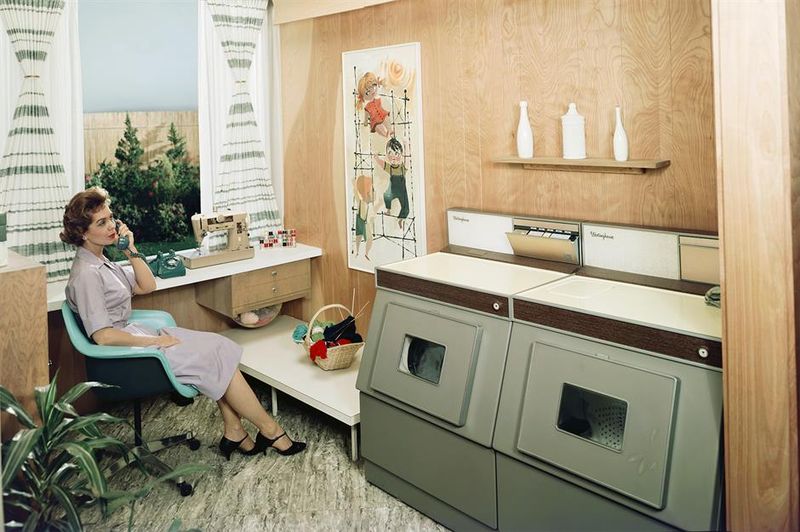
During the late 1940s and early 50s, American companies like General Electric and Hoover launched a wave of automatic washing machines that revolutionized laundry day.
These new models let families wash bigger loads with far less effort, saving precious time. As the economy thrived and people embraced modern conveniences, electric washers became household essentials.
By the end of the decade, owning a washing machine was practically standard, marking a huge step forward in making everyday chores faster and easier for American families.
14. Homes Of The Future
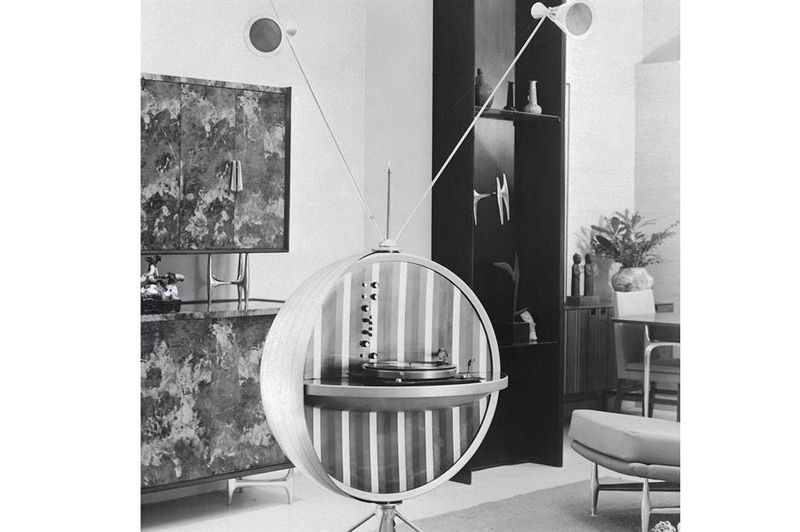
In the 1950s, America fell head over heels for futuristic technology, swept up in the excitement of the Space Race and dreams of life beyond Earth.
With imaginations running wild, artists and engineers envisioned the amazing gadgets tomorrow might bring. One striking example was the 1959 prototype for the “Forecast Music Sphere,” an ambitious concept for a cutting-edge stereophonic sound system.
Created by designer Lester Beall for The Aluminum Company’s “Designs of Tomorrow” series, this space-age marvel never made it past the drawing board.
15. Return To Domesticity
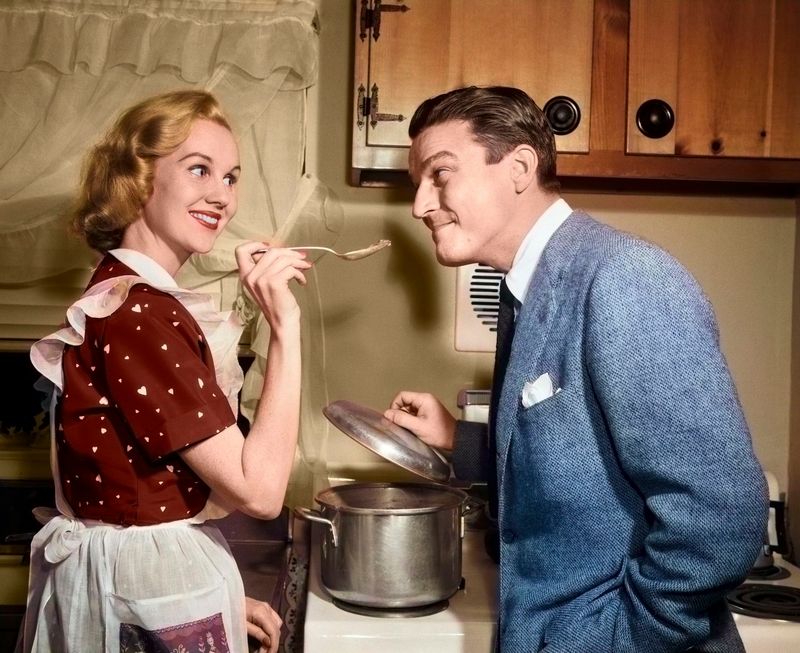
Even with all the exciting new technologies of the time, there was still intense pressure for women to step back into traditional domestic roles.
During the war, women had filled crucial jobs once held by men, building ships, driving trucks, and working as riveters to keep the country moving. But once peace returned, society shifted its expectations, urging women to focus on homemaking and motherhood.
The 1950s saw the rise of the idealized “happy housewife” image, a smiling woman who effortlessly managed a spotless home, cared for her family, and looked flawless doing it.
16. Consumer Propaganda
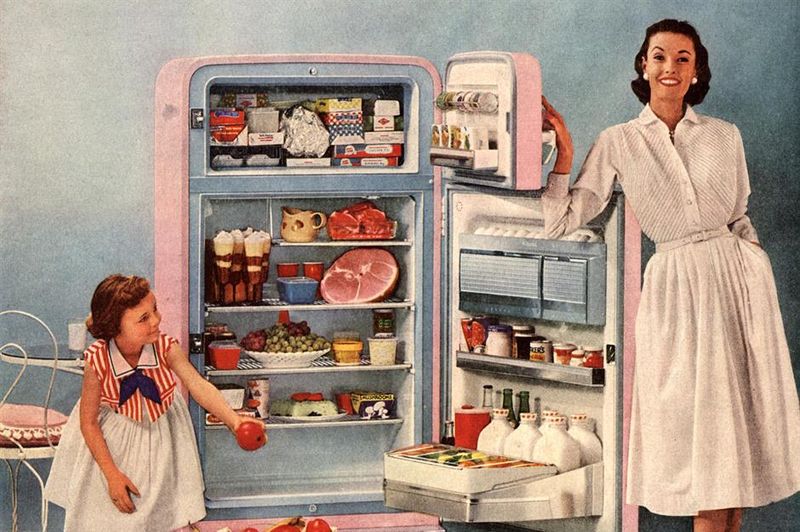
This ideal of the picture-perfect housewife was impossible to escape, with messages of domestic bliss aimed squarely at women from every direction.
TV commercials and glossy magazine ads promised that the secret to a flawless home and happy family lay in buying the right products.
One look at this refrigerator ad, where a stylish mother and daughter proudly pose with their fully stocked, shiny pink fridge, and you can see the allure. Who wouldn’t dream of living such a seemingly effortless, beautiful life?
17. The Baby Boom
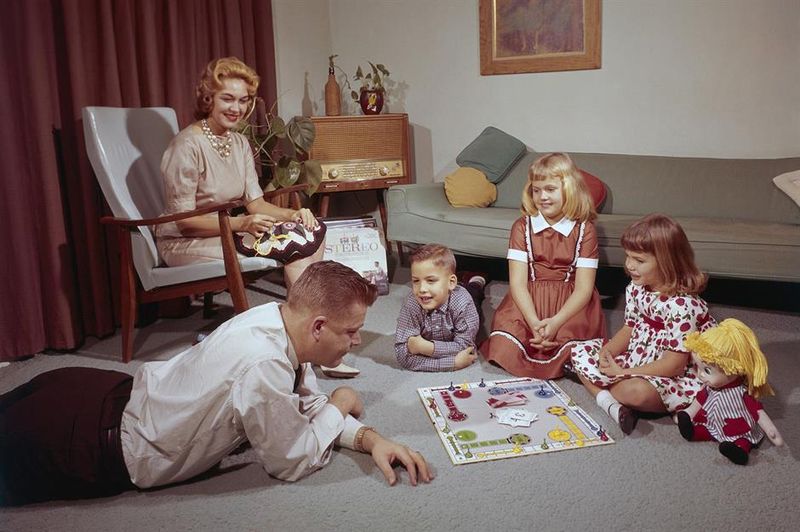
One of the most significant milestones of the 1950s was the Baby Boom, a wave of births between 1946 and 1964 that brought 76 million new faces into the world and made up a staggering 40 percent of the population.
Some historians believe this surge reflected a deep longing for stability after years of economic hardship and war.
Others argue it was fueled by Cold War anxieties, with leaders hoping a booming population would strengthen America against the growing communist threat.
18. The Family Lifestyle
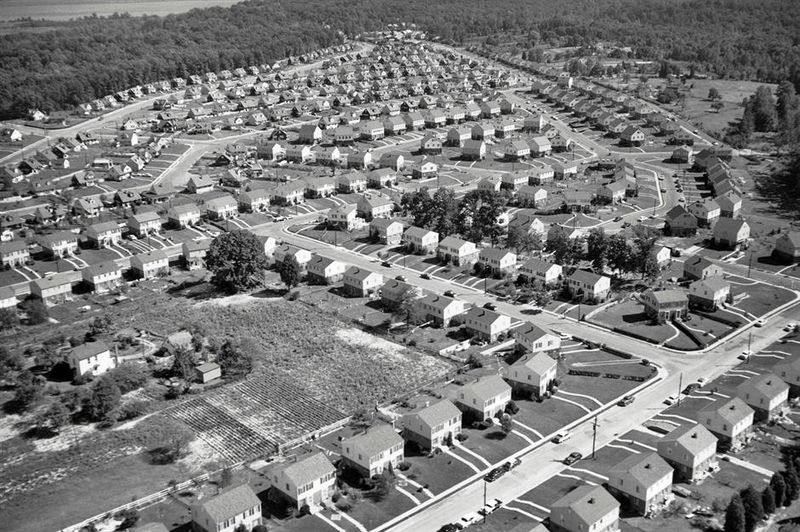
No matter what sparked it, the Baby Boom turned family life into the defining focus of the 1950s. As millions of young parents looked for room to grow, they flocked to the suburbs in search of space and comfort for raising their children.
New housing developments, like this one in Alexandria, Virginia, quickly sprang up. Rows of nearly identical homes with straight driveways and tidy lawns created neighborhoods that offered a fresh start and a sense of stability for the booming families of the era.
19. Suburban Pride
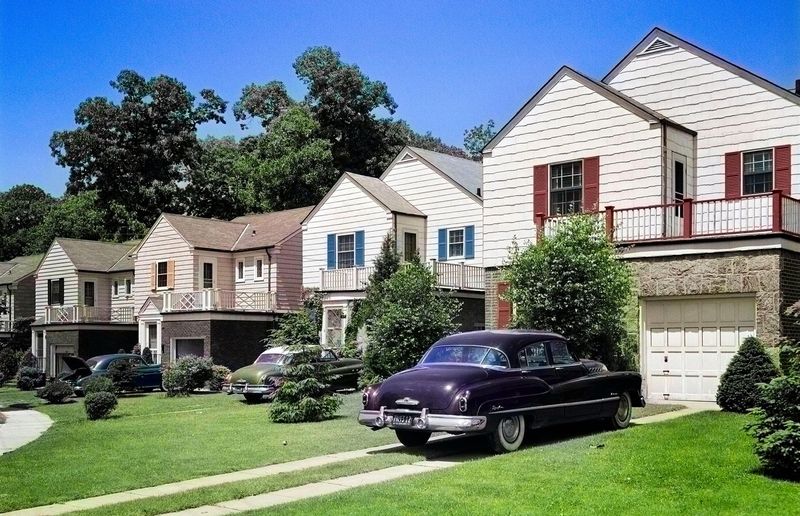
As the 1950s rolled on, the growing suburban lifestyle left its mark on the way homes looked and felt. A well-kept exterior became a badge of honor, with families pouring time and money into boosting their home’s curb appeal.
Inside, spaces reflected the era’s rigid gender roles. Kitchens grew bigger to spotlight the homemaker’s role in family life and entertaining, while garages and basements turned into dad’s personal retreats, giving him a spot to tinker and escape the daily bustle of the household.

